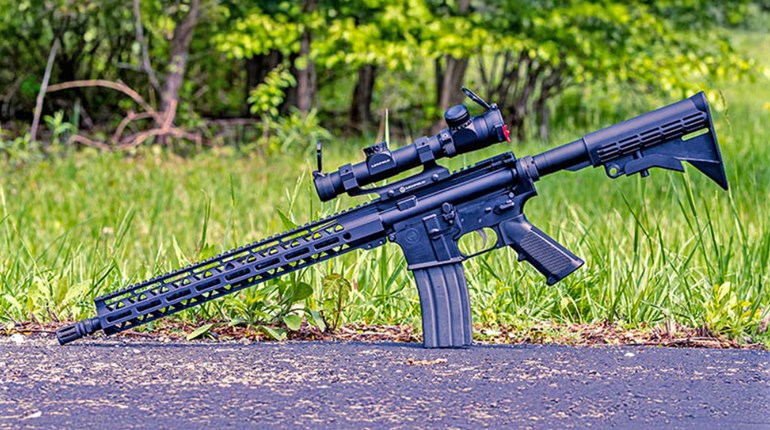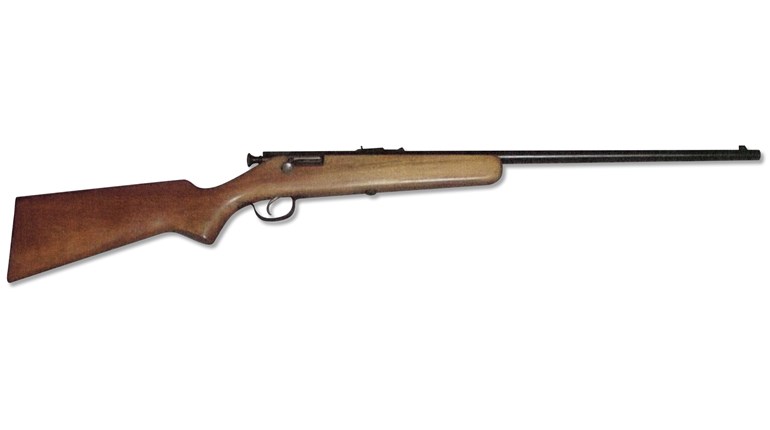
The instructors at a shooting school he attended had shouted from the mountaintop that everyone should be using a 50-yard zero for 5.56 NATO ARs. My friend has the same military background as I, along with the experience-influenced opinions that go with it. We both use a 100-yard/meter zero on most of our rifles. Why? We're creatures of habit and are used to our needed hold—under or over—for various distances. We also tend to use optics that allow adjustments for elevation, either through reticle holds or elevation-knob adjustments. With these sighting systems, the specific zero distance is less of an issue. However, for shooters using only iron sights, reflex sights, optics with simple reticles or capped "hunter knobs," using a non-standard zero may well make target engagement at multiple ranges easier.
Back when I was still capable of slogging around with a ruck on my back, my issued 5.56 NATO carbine—an accurized M4 variant—wore a low-power scope with a simple duplex reticle. I used the carbine for both general reconnaissance work and spotter duties when my sniper buddy was the primary shooter. This same carbine was often pressed into service for very close-range work, too, hence the low-power scope. I used a 200-meter zero because I found it placed my rounds much closer to point of aim at closer distances, and shots out to 300 meters required very little holdover. The 50-meter zero my friend's instructors were pushing was really the same concept in reverse, likely used because it's easier to find a 50-meter range than a 200-meter range in most places.
The U.S. Army uses a similar method when teaching Basic Rifle Marksmanship to new Soldiers. Trainees are told a 25-meter zero closely replicates a longer-range zero, usually 250 meters, depending on which rifles and munitions are being used. That's close to reality, but it's not quite that simple. What these close-range zeros do in practical terms is allow the shooter greater margin for error by changing the relationship between the shooter's line of sight (through iron sights or optics) and the actual line of bore. By selecting an optimal zero, the lines of sight and bore are closer together out to a specific range, requiring less holdover or under for various ranges. The concept is similar to battle-sight zero (BZO), which allows a single point of aim to produce a hit within a specific-sized target out to an arbitrary distance, dictated by the bullet's velocity and the actual zero distance. Without going into the finer points of a BZO, I'll examine multiple zeros for a sample cartridge to show how trajectories are affected by changing sight in distance.
Most folks are already nearing their hunting seasons, so changing zero and spending a day at the range to confirm holds at different distances is not likely to be an option. However, finding the right zero for your rifle obviously extends to any shooting discipline requiring hits on targets beyond short range. As I've said before, you must verify data ballistic programs give you. I'm repeating it here—especially if you're using someone else's generic muzzle velocity. Run the numbers to give you an idea of what should work best for you, then get out and verify. While using a non-standard zero distance may require shucking an old, comfortable habit, it just might bump up your shooting a notch, too.
Trajectory Comparison for Zeros
The following example is based on a surplus load equivalent to the U.S. military's M855 cartridge, used in current-issue 5.56 NATO rifles. Drop data has been calculated using the Sierra Infinity v6 program and standard atmospheric conditions.

You can see that the vaunted 50-yard zero is close to a 200-yard zero. So close, in fact, they're basically interchangeable with this cartridge. You'll also notice that using a traditional 100-yard zero forces a hold (or sight adjustment) that is much higher for longer range shots than any other depicted zero. I used the M855-equivalent cartridge because it's familiar to many 5.56 NATO AR shooters and is available in surplus stockpiles, not because it will win any accuracy competitions. The same zero-comparison technique will work for whatever gun/cartridge combo you shoot. You'll likely see differences with regard to which close and far distances are most closely matched, but the 50- and 200-yard or meter distances tend to work well with many loads. For example, my .308 Win. hunting load uses a 168-grain Hornady A-MAX with a muzzle velocity of 2,570 fps. A 50-yard zero with this load will impact within .2 inch of a center-hold point of aim at 175 yards. At 200 yards, it's only 1.5 inches low.
If you don't have a fully functional ballistic program like Sierra's Infinity or Perry Systems' Exbal, a quick Internet search will yield many free programs. I searched while writing this column and found each of the following calculators allows you to see trajectories with different zero settings. Some websites will calculate online, while others require a program download. Either way, you have many resources from which to choose.






































